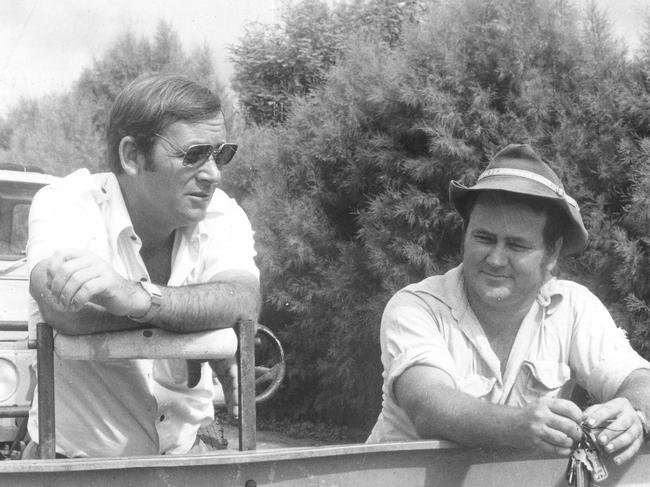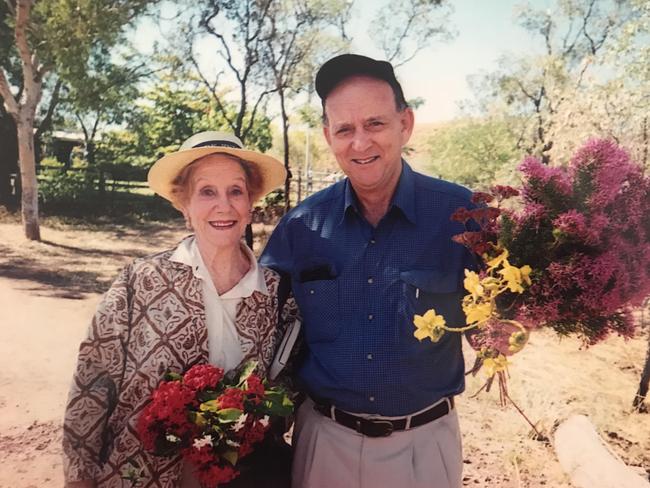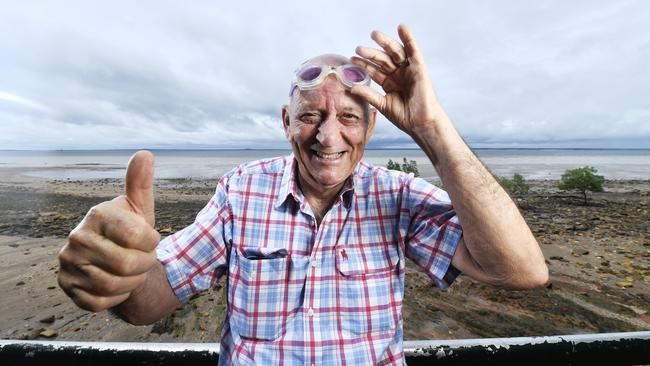ROGER Steele, a quintessential and colourful Territorian, on one of the great lives in both bush and city. STEVE VIVIAN REPORTS
Born in 1939, Roger Steele moved to Darwin in 1948 where he soon began to run the cops around town.
The son of a young soldier, living on Bullocky Point, Steele said his papers were stamped for reform school before he was granted reprieve by the sanguine judgment of a compassionate lawman.
“In 1954 I fell out with the police,” he said.
“Old Sandy McNab used to chase me all over Darwin and finally caught up with me. Greg Ryall, the old sergeant of police, he said: what do you want to do with yourself?’
“I said, ‘I want to go down to the Daly River and grow peanuts.’ He said. ‘I can do better than that, I’ll send you out of a cattle station.’
“So they found a spot for me out at the Humbert River station with the Schulz family. I went there and I never looked back.”
At the age of 13, Steele was to receive a bush apprenticeship that would alter his destiny and ignite a passion and love for the outback under the guidance of his heroes: pioneers, stockmen and giants of the bush.

On the Humber River Station, Steele was reared by mentors like Charlie and Hessie Schultz, Elizabeth Durack and indigenous stockmen.
“School wasn’t for me any longer, so I went away and it made a man out of me,” he said.
“I spent five years with the Schulz family and I went on to run camps and manage cattle stations, run an insurance company and then become elected to parliament for 12 years.
“I could have fallen through the cracks but I was given a real opportunity to get out there and work with the Aborigines, to work with those great Aboriginal stockman, and some of the great mentors to me who are the outback women.
“I went out there in 1952 and I had to learn how to ride, at a time where there was a bloody great big drought.
“That sort of work, chasing wild cattle and working with those really qualified special pastoral workers, those aboriginal blokes and the white blokes who came along, it was fantastic, it grew me up and really did something for me.”
Steele remembers those blissful but hardworking days in the bush creating, for him, a sense of belonging
“We were lucky that we were isolated. There were no telephones and we worked with Aboriginal stockman and we learnt a lot off them,” he said.
“I grew up with a really great team and family out there.
“The outback women from the country, I looked up to them because I never really had a mother. The Aboriginal stockman, they were champions and I really think a lot of them and I still think of them. Every other day I think about the old blackfellas out there and the ones I used to work with.”

Roger would ultimately become head stockman, leading mustering and droving trips, and working stations for absentee landholders including Britain’s Lord Vestey.
He was a peer of Noel ‘Pic’ ‘Willetts, Australia’s top boss drover from the period, with whom he shared campfires.
The Duracks, Quiltys, Underwoods and other pastoral behemoths were among his friends.
In 1965, a searching Steele returned to the city to become a Darwin insurance executive.
Steele, or ‘Stainless’, then moved into the halls of power as a Territory parliamentarian and government minister.
With no formal education beyond primary school, Steele leveraged his versatile skills and colourful character — and a bit of luck — to win Dick Ward’s seat at the 1974 Territory election.
The money for Steele’s CLP party membership, which qualified him for party preselection, was a $50 donation originally put down on a bar in Katherine with the intent to boot Gough Whitlam out of office.
The CLP preselected Steele to run against Dick Ward as a rank underdog. When Ward was offered the job to the NT’s first land rights judge in 1974, Steele scrambled enough votes, riding a wave of anti-Whitlam sentiment, to pip Ward’s Labor replacement and take the electorate.
Steele soon became a senior member in Paul Everingham’s ministry, serving across portfolios of transport, tourism, industrial development, primary production and assistant treasurer in his 12 years in parliament.
Of his many achievements in this time, Steele puts the establishment of Gregory National Park (currently 12,882 square km) as one of his most cherished.
“That’s in the VRD (Victoria River District) country, where I claim as my country … I’m not an Aboriginal bloke of course, but that’s what I claim,” he said.
Steele said remains proud of the progress made under chief minister Everingham in those years.

“He was a dynamic leader — I don’t think they’ve seen one as good as him in the NT Parliament since,” he said.
“‘Action Everingham’ they called him. He was a decision taker.
“The Territory was stultified by these long white socks blokes walking around here in Darwin on two year terms.
“We were for the Territory. We were anti-Canberra. There was a real bias against Canberra decision-making, and people elected us for that.
“The philosophy was aimed at decision making for Territory people, for Territory activities and for Territory affairs.
“That was our main feelings I those earlier days: to get rid of central government, for Territorians to make decisions, and to run our own race.”
When Steele became speaker of the Northern Territory in 1984, he said the horse hair of the speaker’s hat was the closest he had been to the bush in a while.

“I went in there for 12 and a half years and had a real ball,” said Steele.
With four kids and beloved wife Jeanette, Steele, who turned 80 last week, enjoys a quiet life far removed from his early days of mischief and muster.
After a stint in Longreach as chief executive of the Australian Stockman’s Hall of Fame, Steele supports Jeanette run a bed & breakfast — Steeles at Larrakeyah — from their family home, loves his morning coffees with mates, and remains busy and content after a life of hard work.
He’s 80, but active, with a head held high as one of the most respected, and respectful, bushmen the Territory has known.


Add your comment to this story
To join the conversation, please log in. Don't have an account? Register
Join the conversation, you are commenting as Logout
‘It’s a coup’: ‘Terminated’ Alice Springs principal’s explosive allegations
The former principal of troubled Alice Springs school is alleging he was sacked after standing his ground over a proposal which is going to be ‘a sh-t show’.
Gaps in Darwin maternity services highlighted through stories of loss
Darwin families are making plans to leave the NT as shocking testimonies reveal gaps in maternity care, with some mothers seeking help four times before tragedy struck.